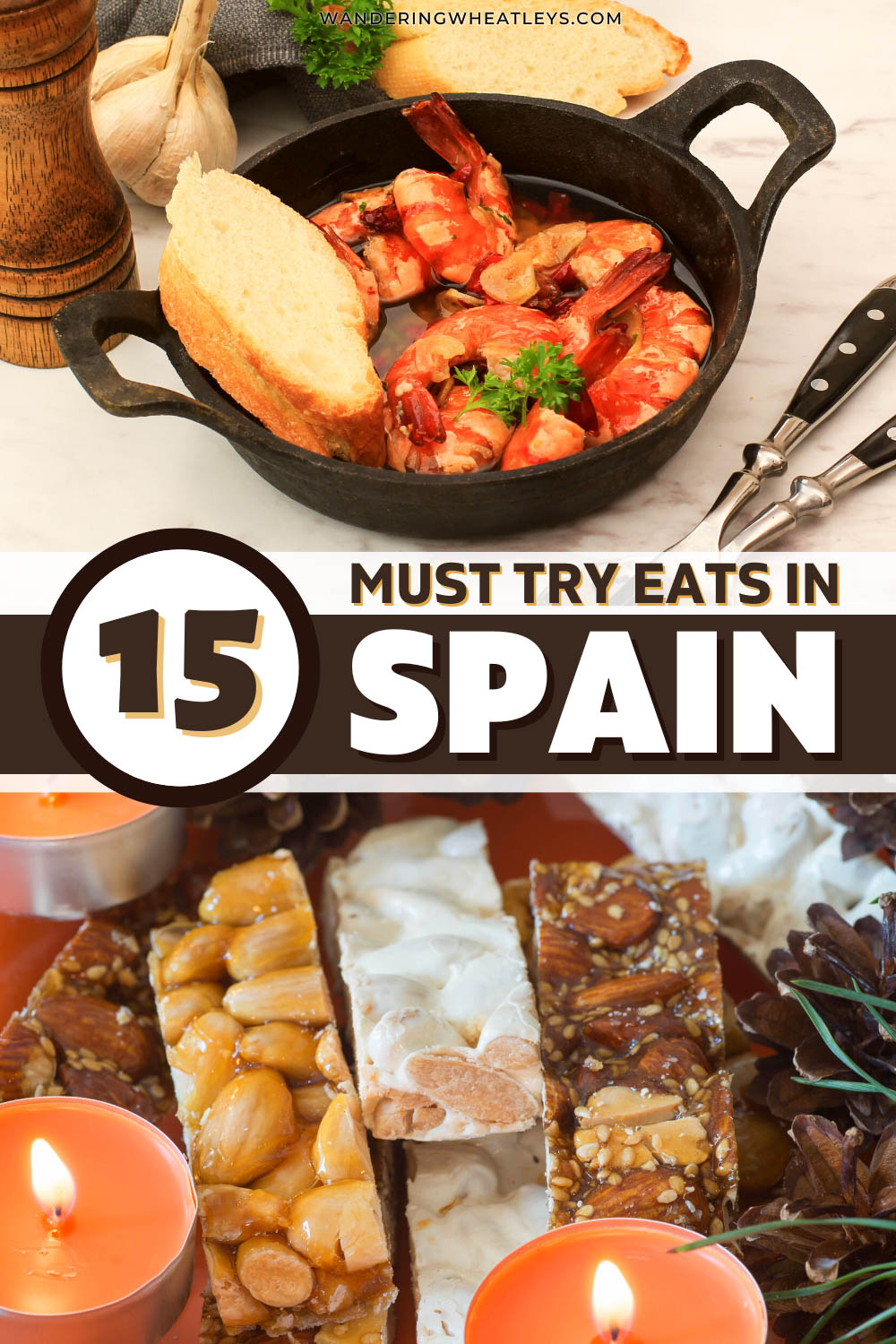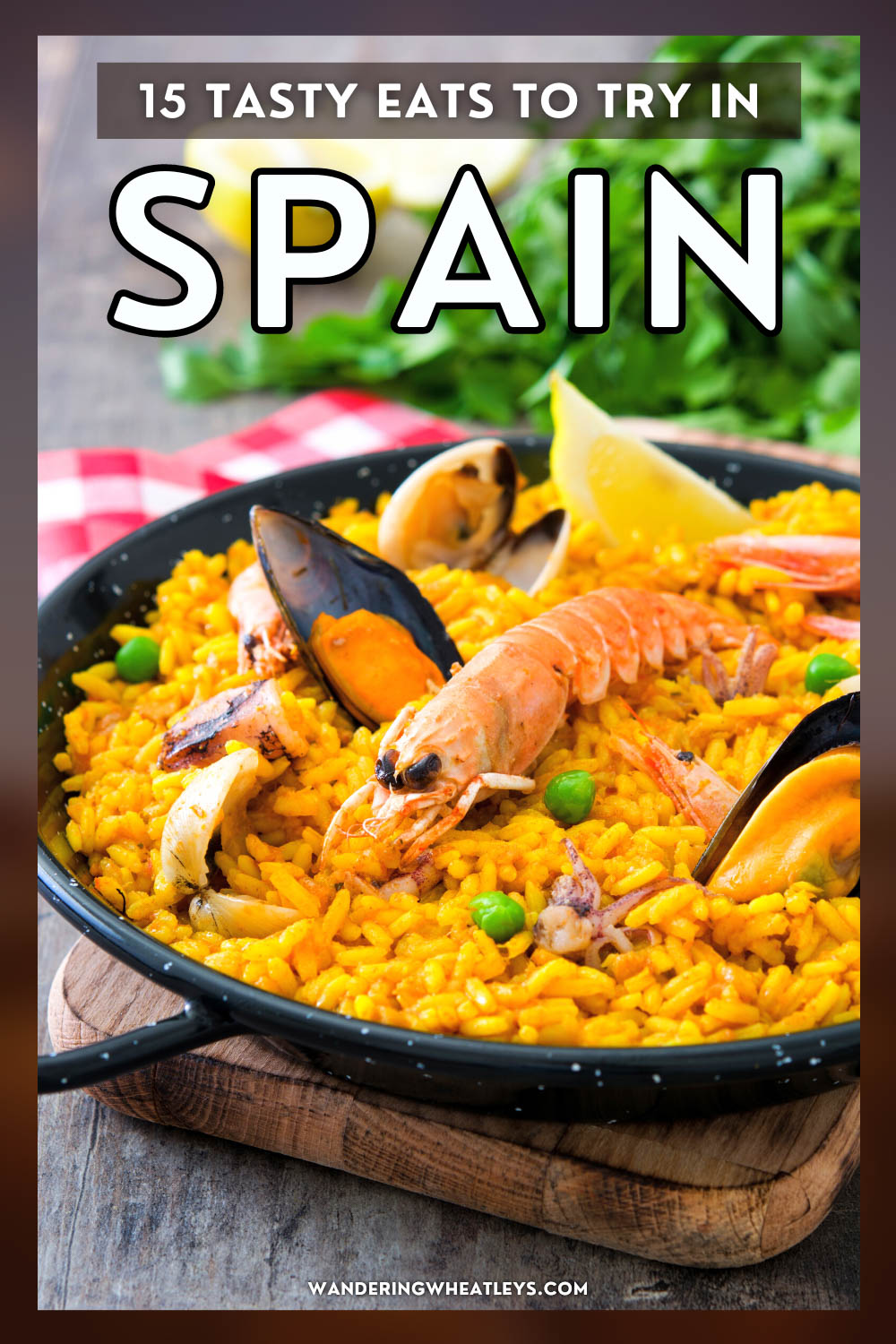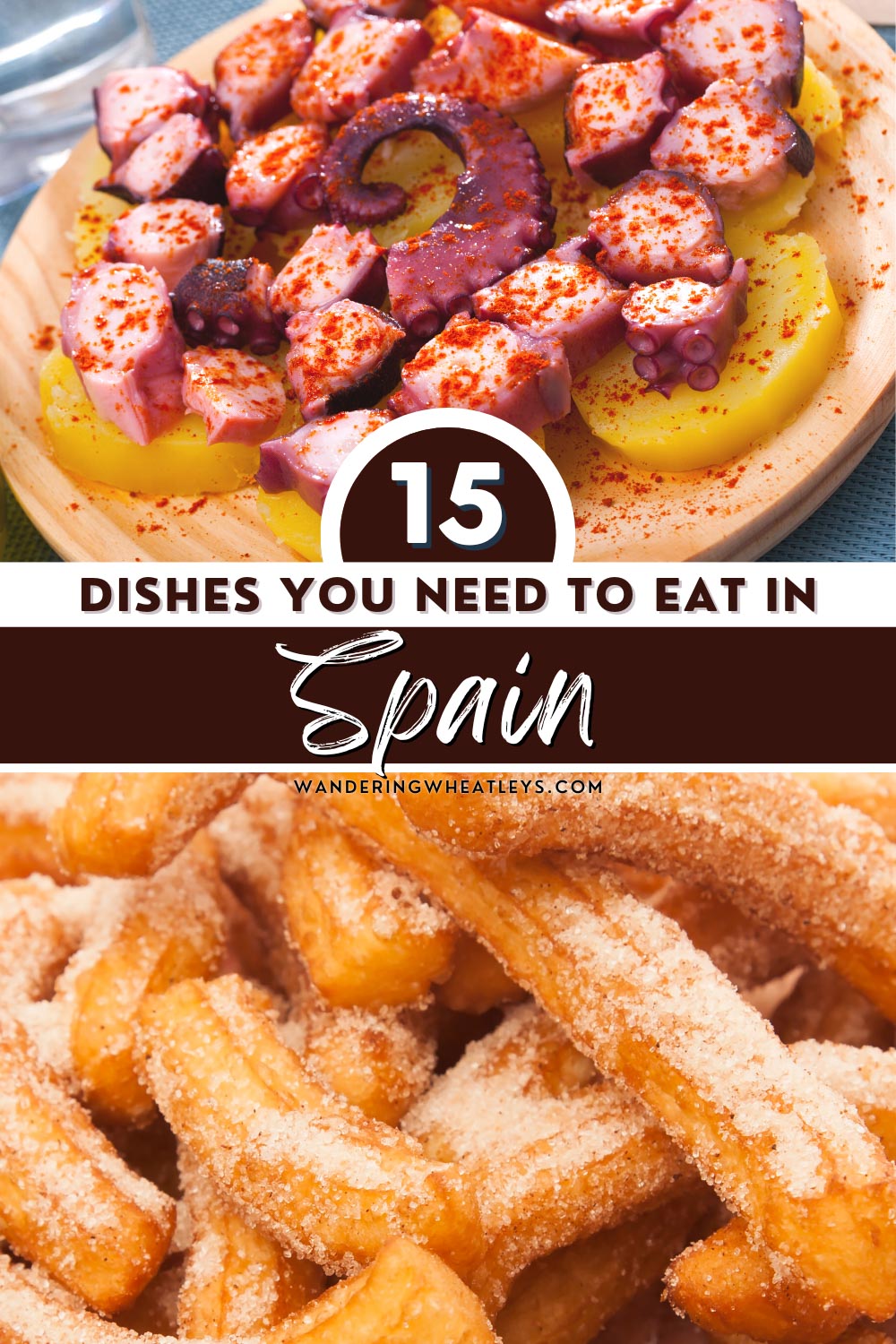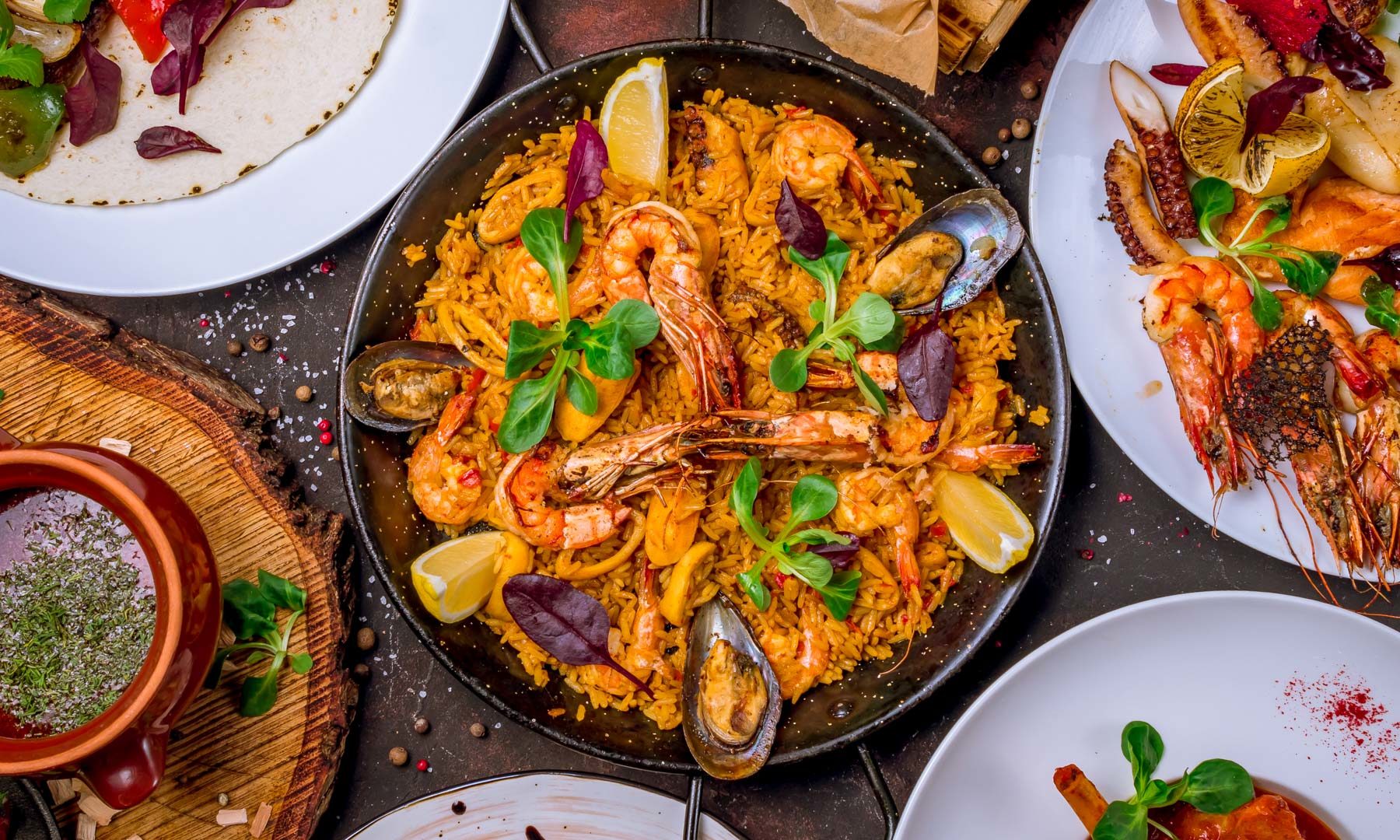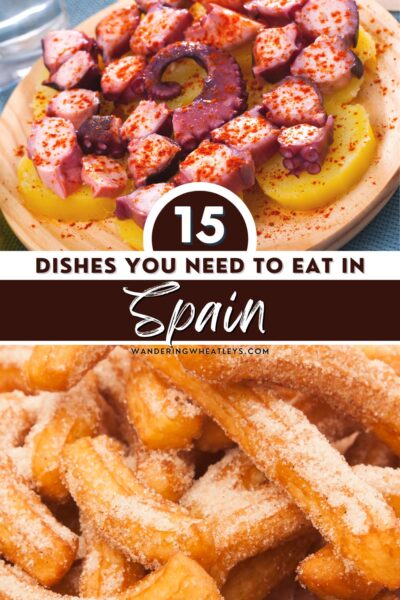Spain is one of the best places in the world for amazing food and incredible wines. Food culture is deeply important to Spanish people, so much so that many parts of their day-to-day lives revolve around it. From late-night drinking sessions in bustling tapas bars to huge gatherings at family-run restaurants on Sunday afternoons, food is definitely ingrained into the way of life in Spain.
If you’re planning on visiting different parts of Spain, you’ll discover loads of new dishes with each place you travel to. From the rustic and texture-packed paella of Valencia and the indulgent crunchy churros of Madrid to the fluffy papas arrugadas of the Canary Islands and the rich peppery sobrassada of the Balearic Islands, Spain dishes up a real buffet of flavors.
We’ve spent a lot of time traveling all over Spain and trying as many different Spanish dishes as we could find. So, here’s our pick of the top dishes in Spain to help you decide what to order during your next big trip!
Don’t forget to check out our web story: The 15 Best Spanish Dishes You Have to Try!
Disclaimer: This post may contain affiliate links. If you make a purchase or booking through one of our links we may earn a small commission (don’t worry, it’s at no extra cost to you).
The 15 Best Spanish Dishes You Have to Try
1. Paella
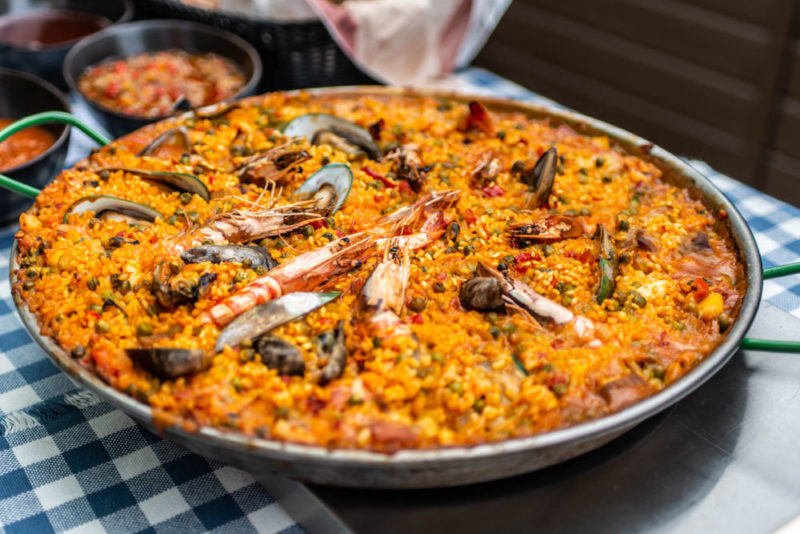
Easily the most iconic dish to ever come out of Spain, paella is something you’ve absolutely got to try during your visit. You can find many different types of paella across the country, but if you want something truly authentic, try paella when you’re in Valencia. This is where the original paella valenciana (Valencian paella) was created.
Paella valenciana is made from round-grain rice, green beans, rabbit, chicken, snails, and lima or butter beans. All the ingredients are simmered in a huge black metal dish with chicken stock and olive oil. Saffron usually gives paella its instantly-recognizable golden color, but turmeric is sometimes used instead.
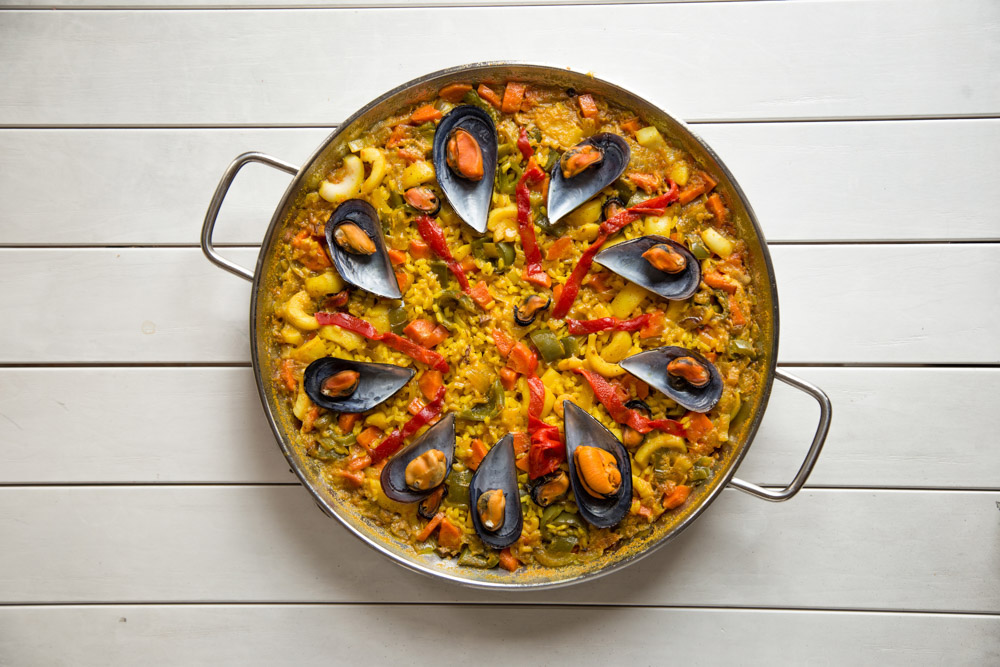
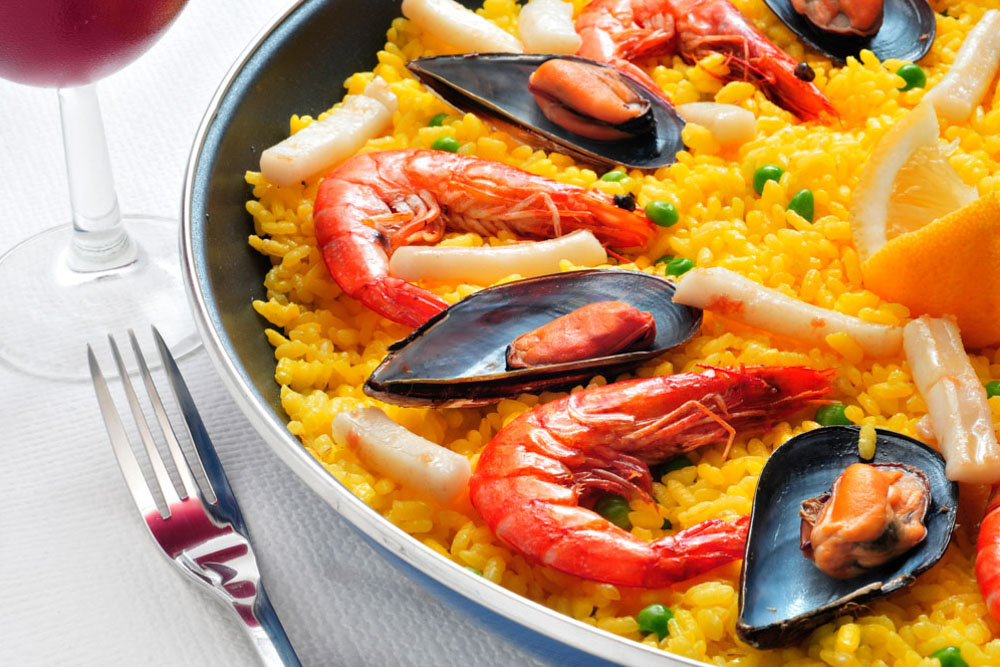
If you’ve never tried rabbit or snails before, the ingredients might sound a little intimidating. If you’d prefer to play it safe, you’ll find seafood paellas, meat paellas (usually made with chicken and chorizo), and mixed paellas (half seafood and half meat) throughout Spain, too.
Typical Spanish restaurants usually only serve paella on Sundays and dish up individual portions from the giant pan that can easily cater to 20+ hungry diners. When the paella’s gone, it’s gone for good. So if you want to make sure you get some, it’s a good idea to reserve a portion at your chosen restaurant in advance.
2. Queso manchego
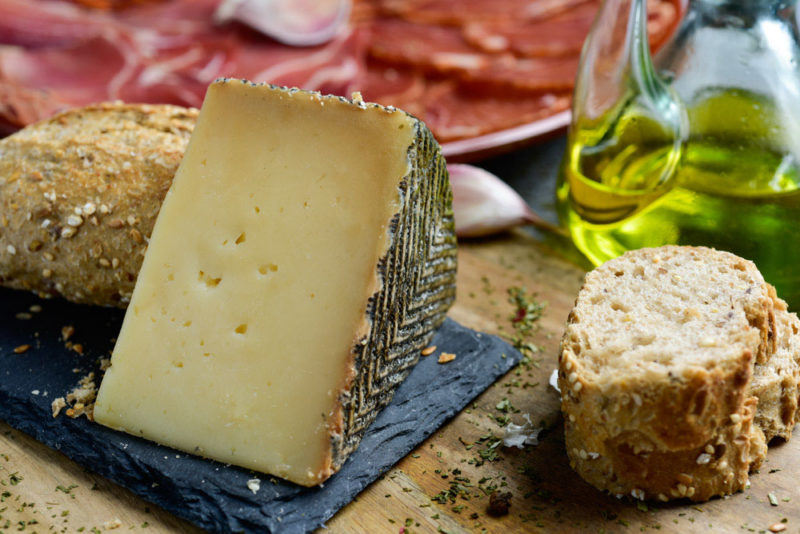
Spain takes its cheese very seriously. If you go into any big grocery store, you’ll find at least an entire aisle dedicated to all kinds of cheese made from cow, sheep, and goat milk. If you’re new to Spanish cheese, we recommend trying some queso manchego (manchego cheese).
Queso manchego is made from milk that comes from the Manchega breed of sheep in the La Mancha region of Spain. Relatively small cheeses that weigh less than 3.3 lbs are matured for at least 30 days, while larger cheeses are matured for between 60 days and two years.
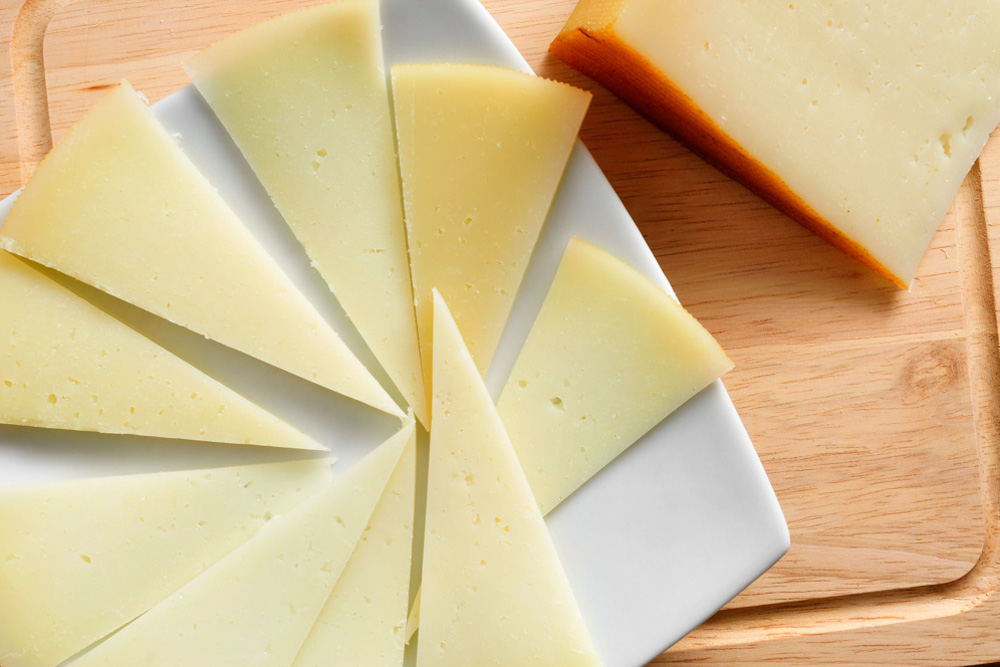

The color of queso manchego is very light, ranging from an ivory-yellow to almost pure white. It’s also got a distinctive yet subtle flavor. It’s well developed but not over-powering and leaves a wonderful creamy aftertaste of sheep milk.
You’ll find queso manchego in almost all tapas bars and as an appetizer on many restaurant menus. It’s often served as part of a cheese board or alongside Spanish charcuterie for a wonderful snack plate.
3. Jamón ibérico
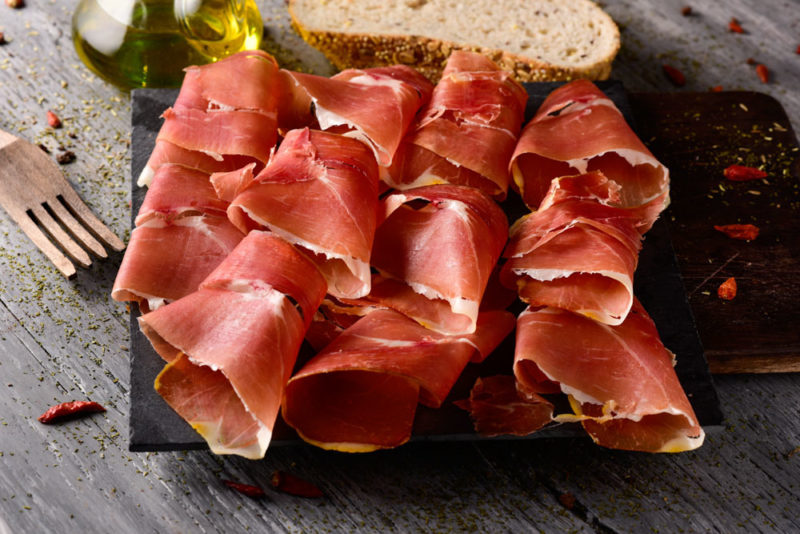
One of the most famous Spanish tapas dishes, jamón ibérico (Iberian ham) is a lot better than it sounds. So much more than regular ham that you have in your sandwich for lunch, jamón ibérico is deep red in color, with lines of delicious fat that really do melt in your mouth.
This special type of ham is made from Iberian black pigs, which live on huge farms full of oak forests, native grasses, and wild herbs. They’re free to graze on whatever they like and can eat as much as they want. Acorns are one of their favorite treats and are readily available there.
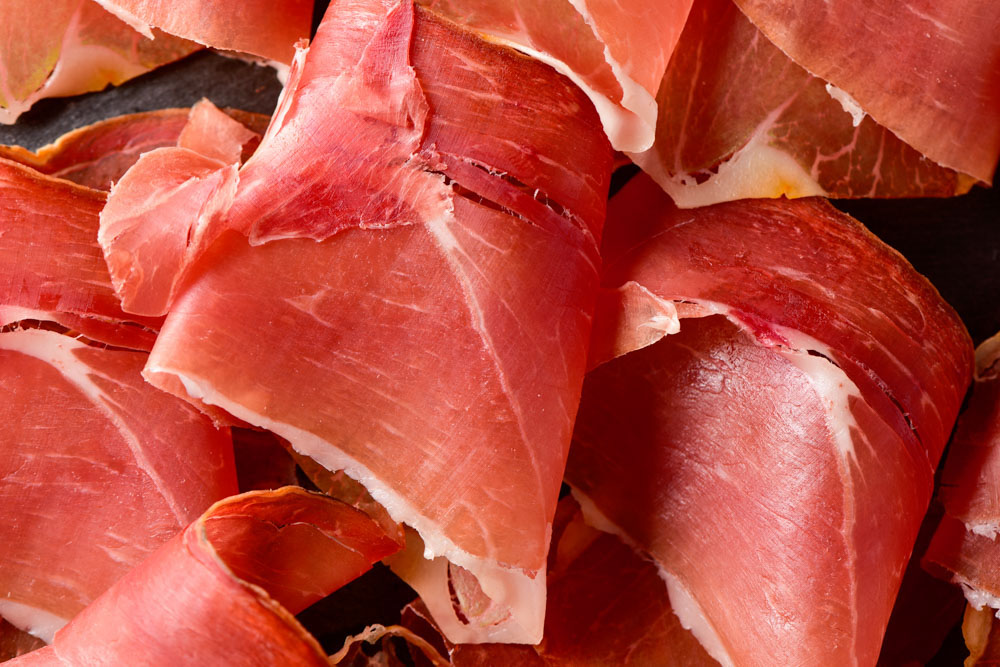
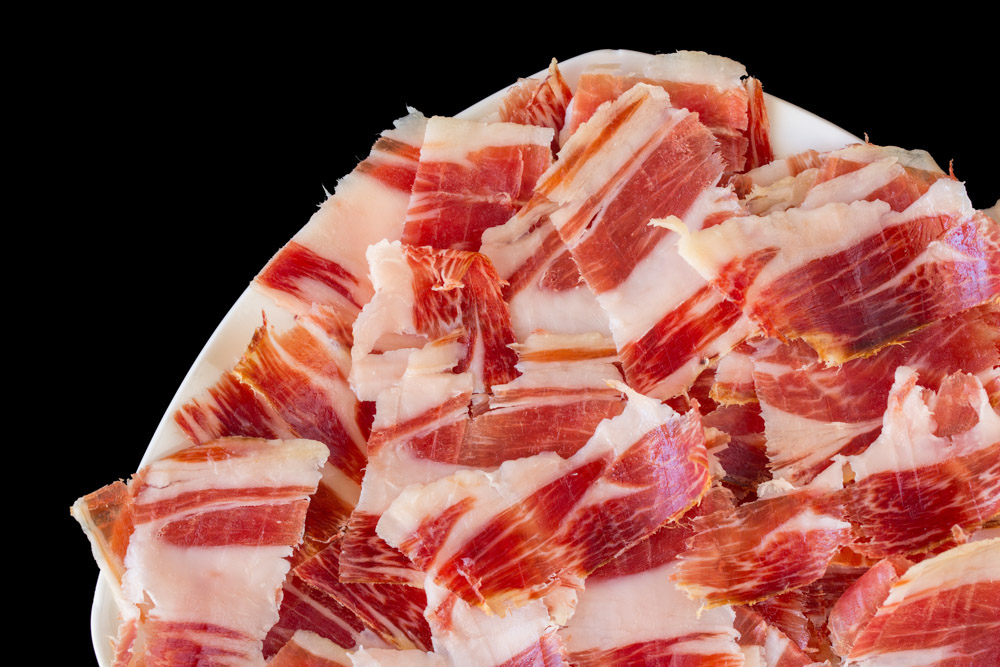
The pigs can eat as much as 20 pounds of acorns every day, which gives them an incredibly high fat-to-meat ratio. The sweet nuttiness of the acorns they eat is also what gives jamón ibérico its unique delicate flavor.
Like queso manchego, you’ll also find jamón ibérico available in tapas bars, on restaurant appetizer menus, and as part of mixed cheese and charcuterie boards. The flavor is so superb that you won’t be able to get enough of the stuff!
4. Conejo en salmorejo
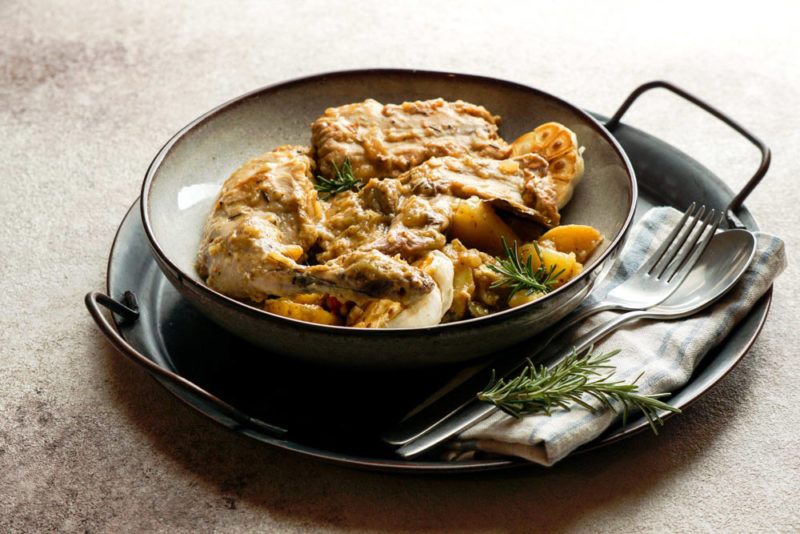
If you’re planning on visiting the Canary Islands and stopping by a typical Canarian restaurant, you’re sure to find conejo en salmorejo (rabbit in salmorejo sauce) on the menu. Although this dish originates in mainland Spain, it has become one of the most traditional and loved meals in the Canary Islands and one of the most famous Spanish dishes.
Because of the volcanic soil, it’s difficult to raise a lot of livestock in the Canary Islands. A lot of proteins, such as beef and lamb, have to be imported. However, wild rabbits thrive in these dry conditions, which is why this typical dish is so popular and easy to come across.
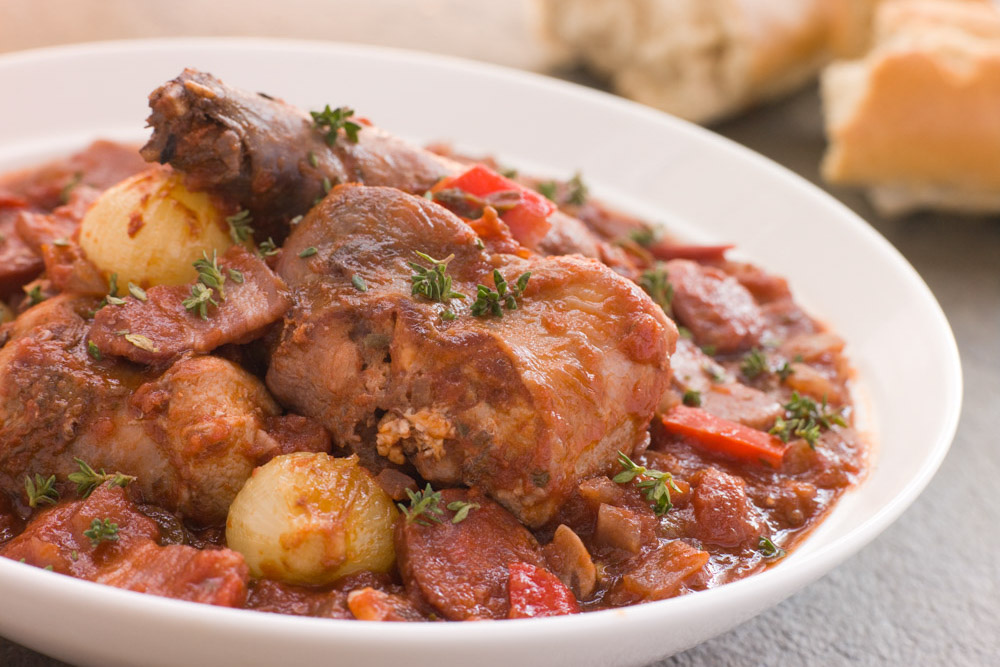
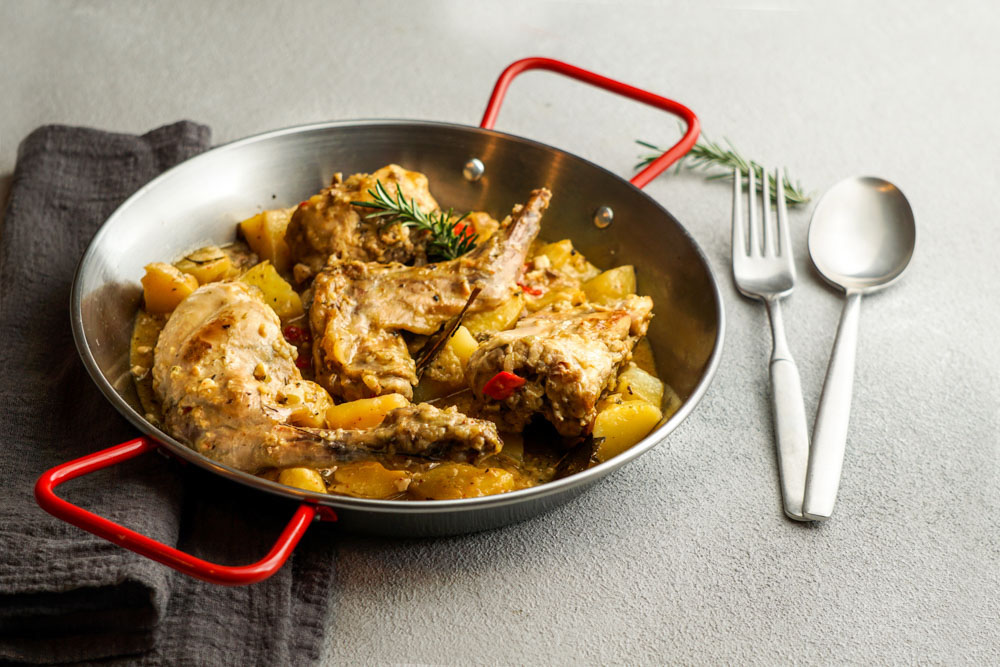
Conejo en salmorejo is made by marinating pieces of rabbit in a combination of garlic, olive oil, white wine, and herbs. It’s then shallow fried with some onion until the outside is crispy and the inside is tender. Extra marinade is added to the pan, along with paprika, to make a sauce. Finally, the dish is placed in the oven to roast until the meat falls off the bone.
5. Tortilla Española
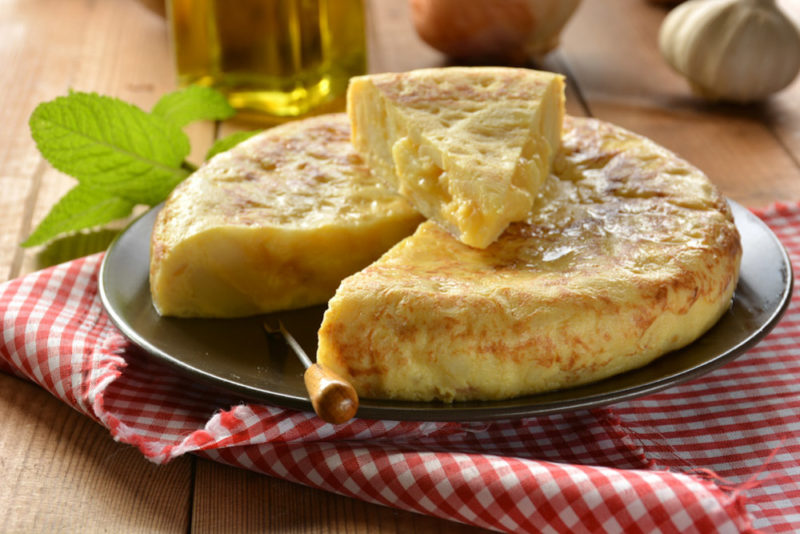
Many of Spain’s most drool-worthy dishes are remarkably simple and tortilla Española (Spanish omelet) is no exception. Far away from the French or American omelets that you may be used to, tortilla Española is a super-thick omelet that’s more like a frittata. Even if you only have a day or two, tortilla Española is a must-try Spanish dish!
Thick slices of potato are layered into a deep skillet and then topped with beaten eggs. The eggs work their way through the potatoes, and when they just begin to set on the bottom of the pan, the whole thing is flipped over and left to cook on the other side.
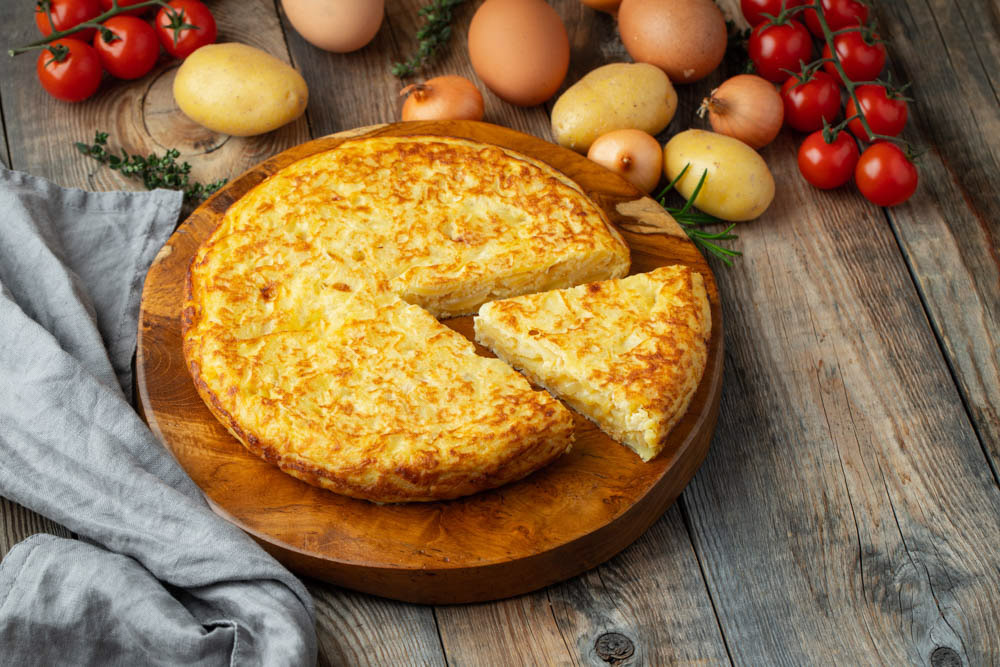
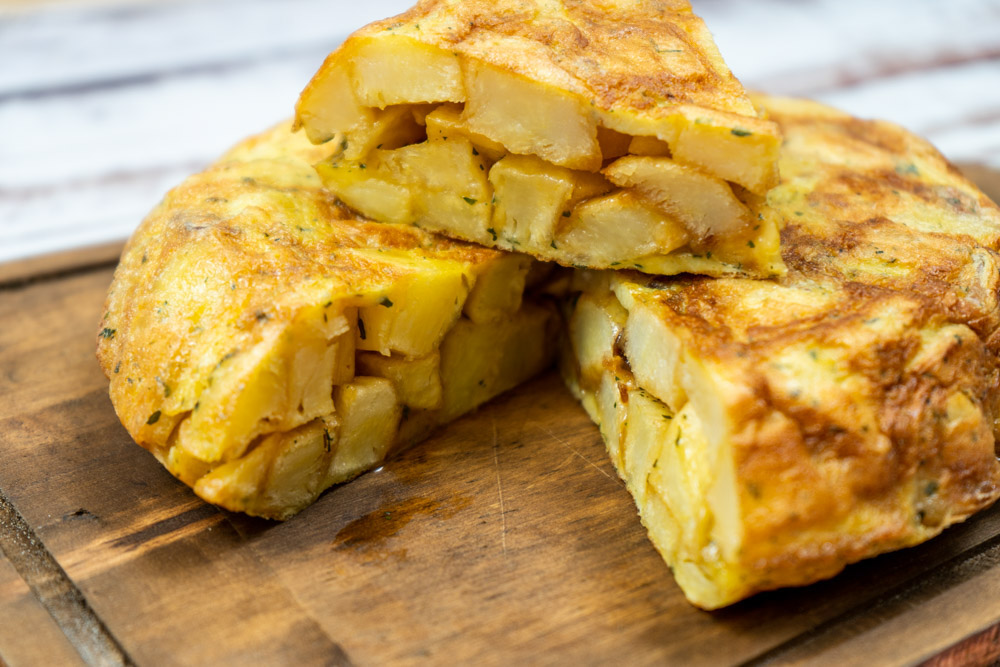
Tortilla española is at its absolute best when the outside is light brown and the inside is a little undercooked. The soft texture of the potatoes is amazing and goes wonderfully with some crunchy, freshly-baked bread.
Basic tortilla Española is made from just potatoes and eggs. But you’ll find some more interesting varieties that include caramelized onion, sautéed spinach, peppery chorizo, and goat cheese.
6. Carrillada
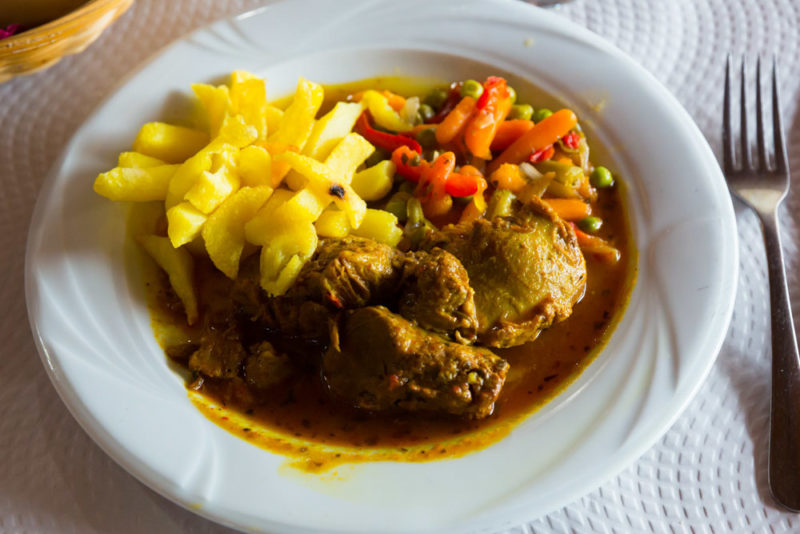
Carrillada (braised beef or pork cheeks) is one of the most delicious, indulgent, and comforting Spanish dishes you can try. The perfect thing to warm up with on a chilly winter evening, carrillada is something you’ll crave as soon as you get back home.
There are two types of carrillada in Spain: carrillada de ternera (braised beef cheeks) and carrillada de cerdo (braised pork cheeks). Whichever one you order, you can be sure of a luxurious melt-in-your-mouth experience.
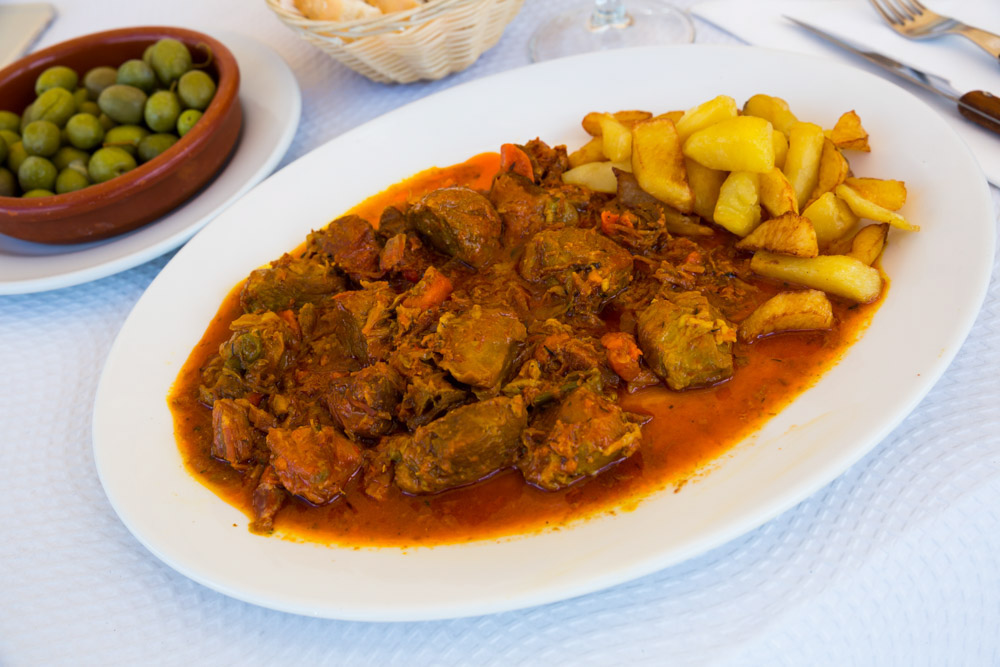

Despite what you may think, carrillada is surprisingly lean. It’s not the fat that gives it the butter-like texture. It’s the way it’s cooked that makes it so tender that you can easily eat it with just a fork. Carrillada is gently simmered for hours over low heat to achieve its wonderful texture.
Pork cheeks are often served with a rich, flavor-packed sauce made from ingredients such as white wine, onion, and carrot. Beef cheeks usually come with an even more decadent sauce made from mushrooms, tomato, and Pedro Ximénez wine.
7. Croquetas
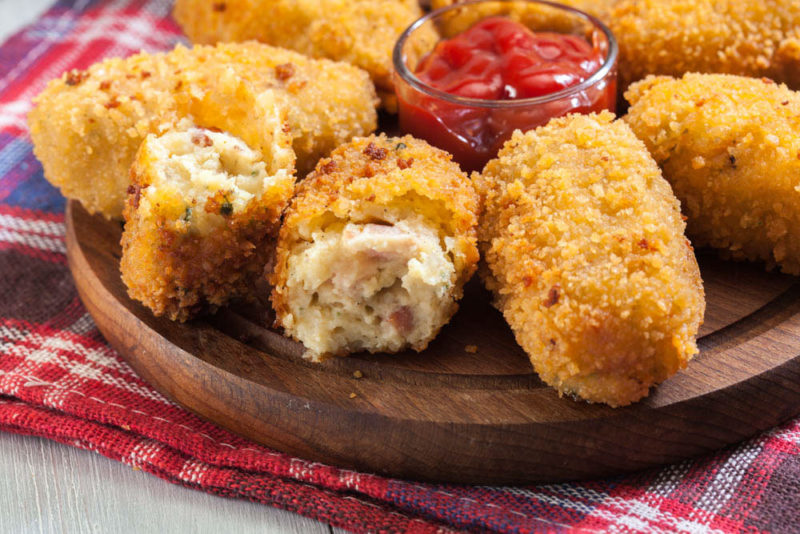
Croquetas (croquettes) are one of the best types of tapas because they come in so many different varieties.
Most tapas bars will usually have a handful of different freshly-prepared croquetas available, while even restaurants will offer a small selection of them as appetizers. If you fancy cooking your own, you can even pick up quality pre-made croquetas from most big grocery stores.
In their most basic form, these mouthfuls of deliciousness are made from mashed potato combined with cheese and béchamel sauce until they form a thick and sticky dough-like consistency.
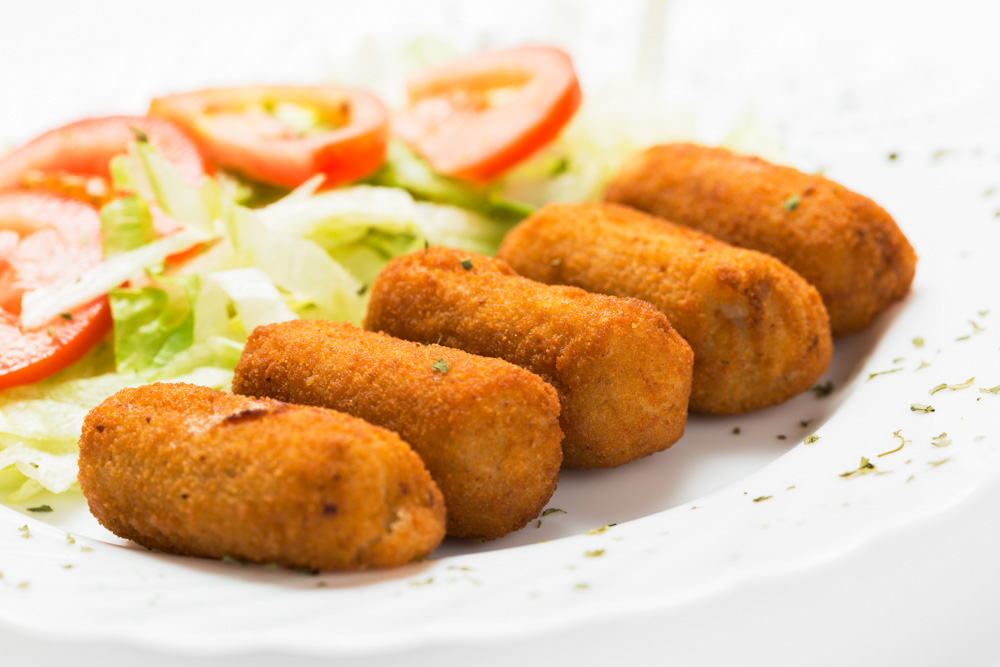
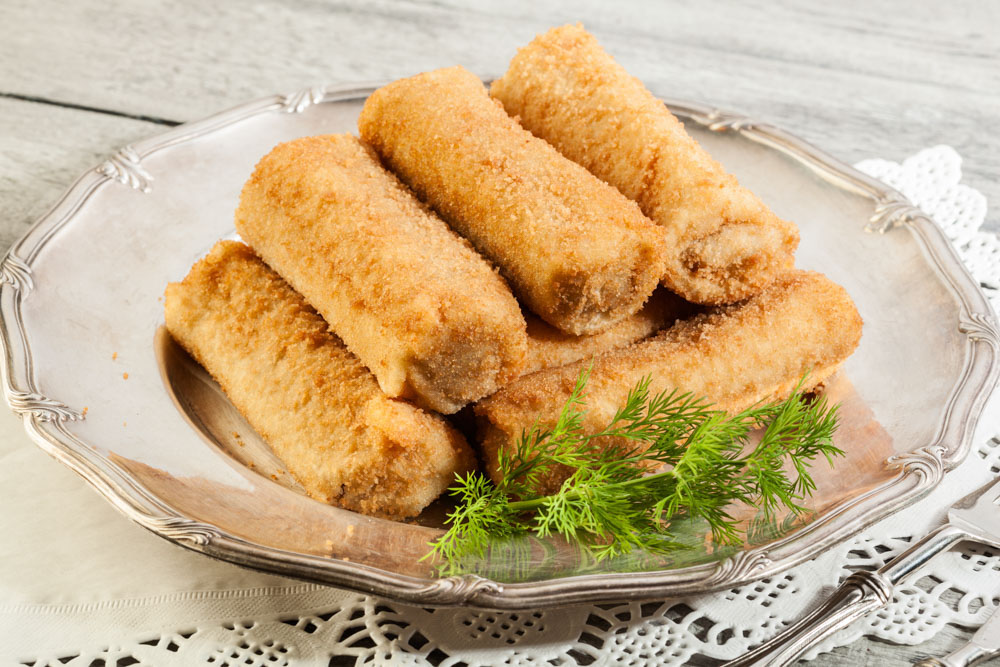
They’re then rolled into balls or cylinders, covered in fine breadcrumbs, and deep-fried until golden brown. The best croquetas are light and fluffy on the inside while still being crisp and crunchy on the outside.
Whatever you’re in the mood for, you’re sure to find some croquetas to satisfy your craving. You’ll find them filled with everything from jamón ibérico, shredded chicken, and mushrooms to chorizo, cod, and even tofu.
8. Gambas al ajillo
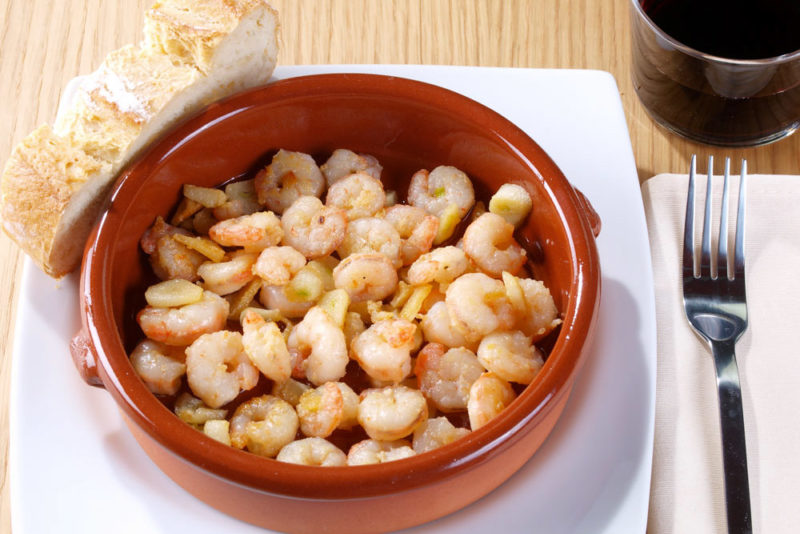
If you’re a seafood lover, gambas al ajillo (garlic shrimp) is easily one of the most popular Spanish tapas. One of the most popular types of seafood dishes in the coastal regions of Spain, gambas al ajillo is light and refreshing but at the same time, rich and satisfying.
This simple dish is made by frying big, juicy shrimp in an amazing-smelling combination of olive oil and garlic. When they’re perfectly cooked, the shrimp are tipped into a small dish, topped with more of the garlic olive oil, and sprinkled with fresh parsley.
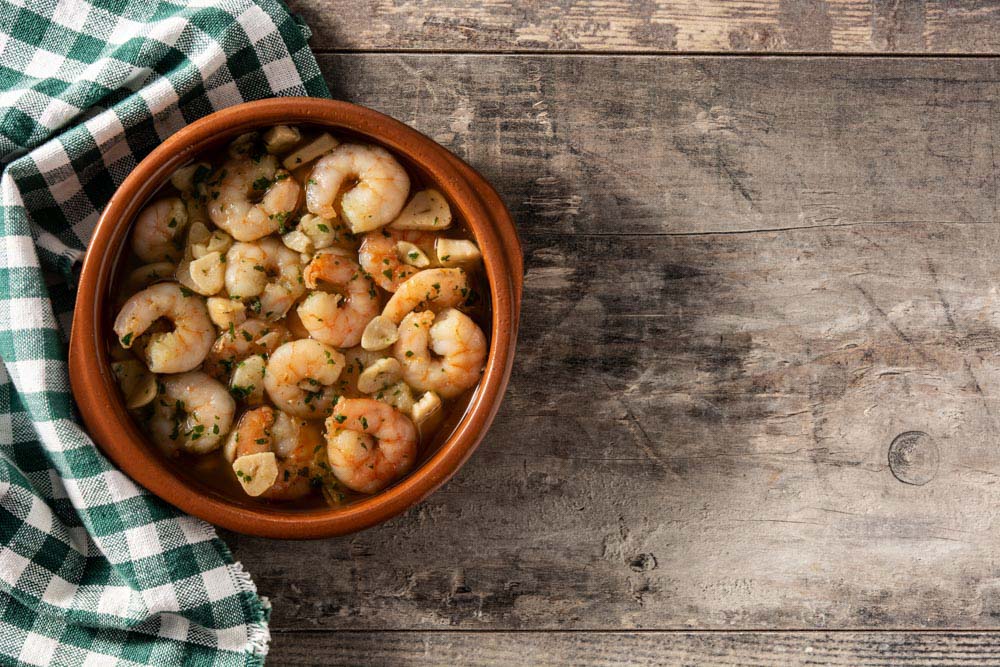
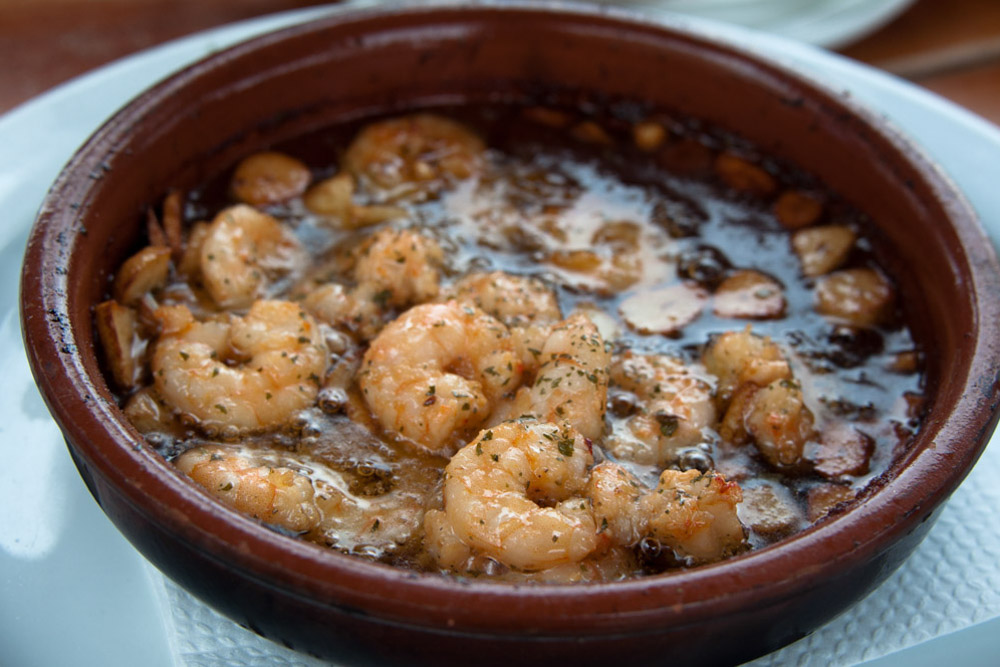
The shrimp arrive at your table still sizzling and smell like the best thing in the world. We guarantee that everyone will be looking at your table when it’s presented to you!
Gambas al ajillo is usually served with freshly-baked crusty bread. It’s a wonderful way of making sure the delicious garlic oil doesn’t go to waste.
Some places peel the shrimp before cooking them, while others serve them with the shell on. If you don’t want to peel them yourself, it’s worth finding out before you order.
9. Pa amb tomàquet
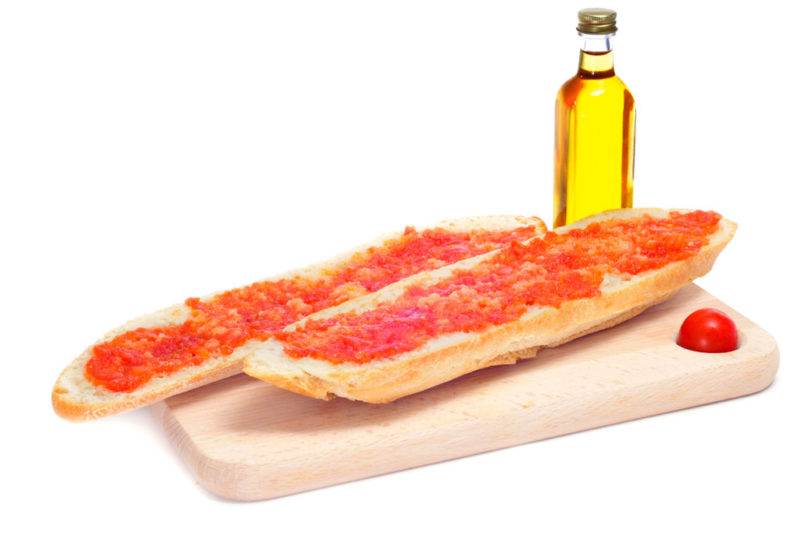
One of the best ways to start the day in the Catalonian region of Spain is with pa amb tomàquet (tomato bread). Although it sounds pretty basic, the name is actually quite a good description of what it is.
One of the must-try Spanish foods to order when you’re in Spain, pa amb tomàquet is made by cutting some top-quality crusty bread into thick slices and gently toasting them in a pan. Each toasted side is then rubbed with a garlic clove before fresh tomato pulp is spooned on top. Every piece is finished with a drizzle of olive oil and a sprinkling of sea salt.
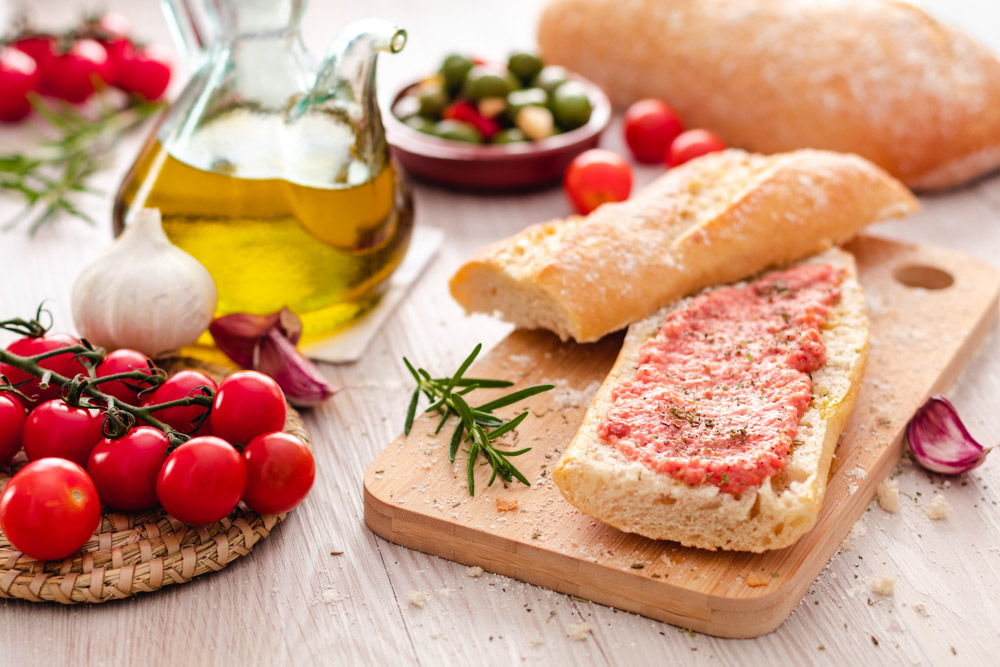
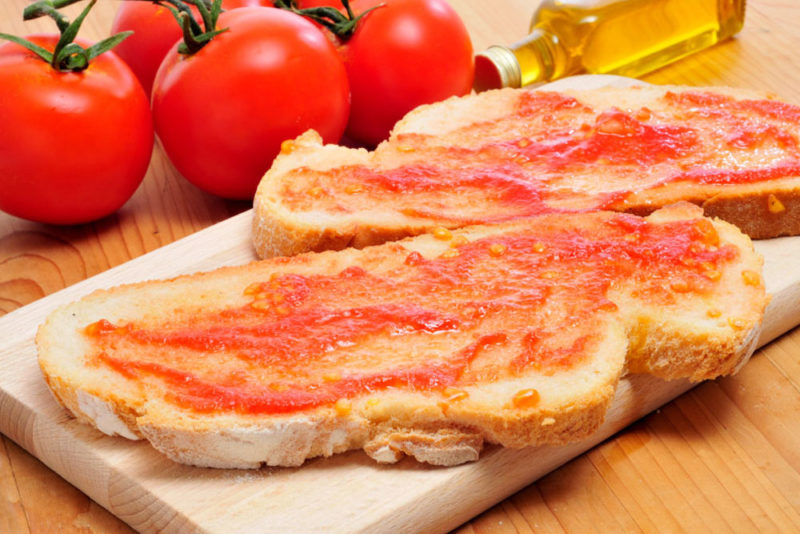
Despite its simplicity, this dish feels really complex when you eat it. The contrast between the crunchiness of the toasted bread and the soft tomato pulp works great together. At the same time, the delicate flavors of the bread provide a subtle base for the powerful garlic, sweet tomato, and rich olive oil. The sea salt is essential and really brings everything together.
Combine a couple of slices of pa amb tomàquet with a cafe con leche (milky coffee), and you’re sure to have a fantastic day!
10. Papas arrugadas con mojo
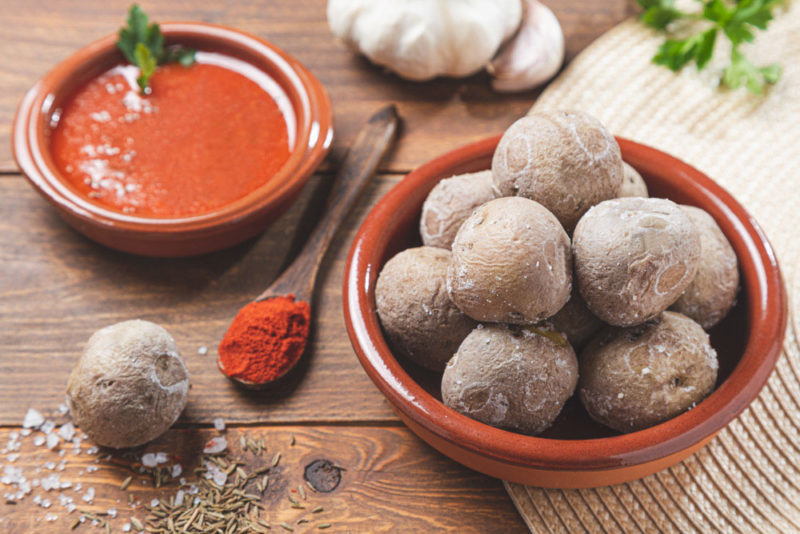
You wouldn’t really expect a side dish to make the list of must-try Spanish foods, but papas arrugadas con mojo (wrinkled potatoes with mojo sauces) certainly deserves to be here. This dish is also known as papas Canarias (Canarian potatoes) and is the most common and popular side dish you’ll come across in the Canary Islands.
The side got its unusual name from the way it looks. The small potatoes are cooked in a pan of heavily salted boiling water with their skins still on. The salt gives them their characteristic taste while also wrinkling the skins up. They look a little unusual but have an incredibly fluffy texture and addictive flavor.
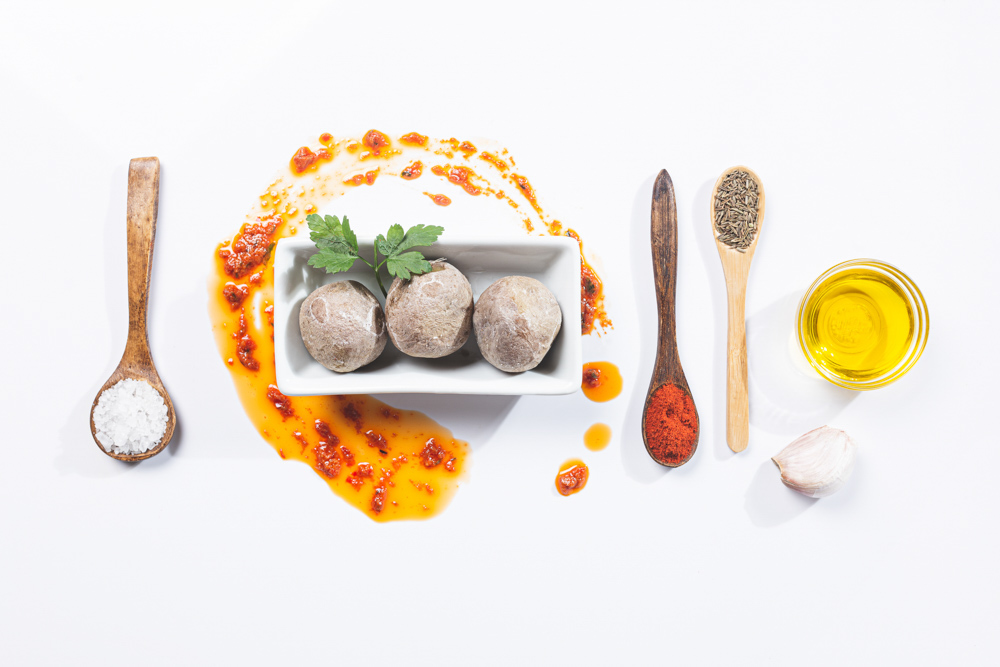
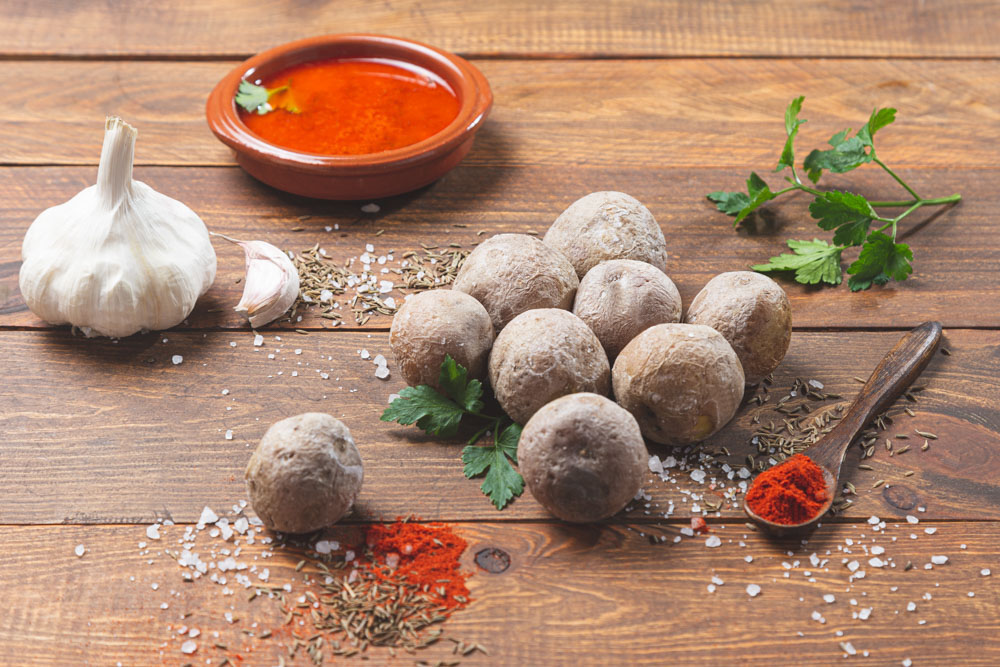
Papas arrugadas are always served with two mojo sauces. The green one is mild and is made from green peppers, cilantro or parsley, olive oil, garlic, and lemon juice. It’s smooth, creamy, and refreshing.
The red mojo sauce is often spicy and is made from red peppers, chilies, smoked paprika, olive oil, garlic, and vinegar. It can range from mildly hot to super fiery, depending on how many chilies are used. Sometimes a third sauce of garlic mayonnaise will be added, too.
11. Pulpo a la gallega
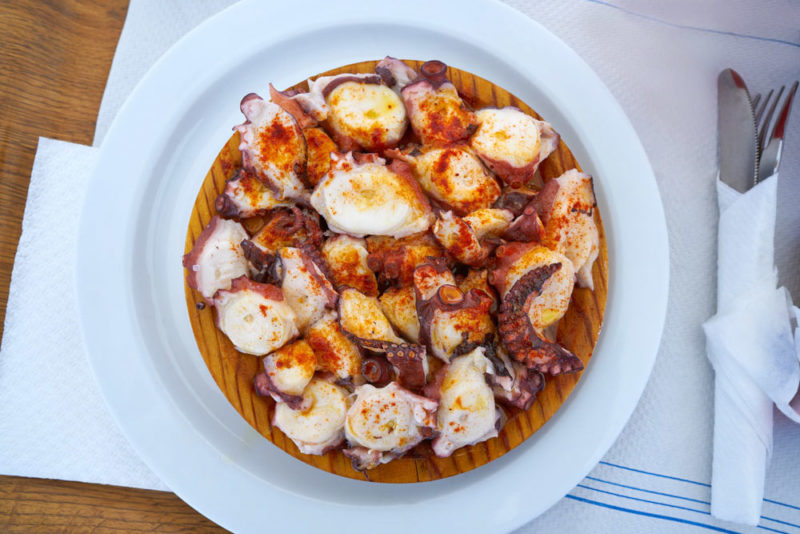
If you’re planning on visiting Galicia, find a restaurant that specializes in seafood and order pulpo a la gallega (Galician-style octopus). When it’s cooked properly, pulpo a la gallega has a fantastic al dente texture and subtle flavors that go remarkably well with a slightly chilled young red wine. If you’re on the prowl for the most famous Spanish foods, pulpo a la gallega is a must.
Thanks to its amazing coastal location, Galicia boasts loads of seafood restaurants that dish up fish and seafood which were caught that very morning. The combination of fresh octopus, modest ingredients, and expert cooking is what makes this dish stand out from the crowd.
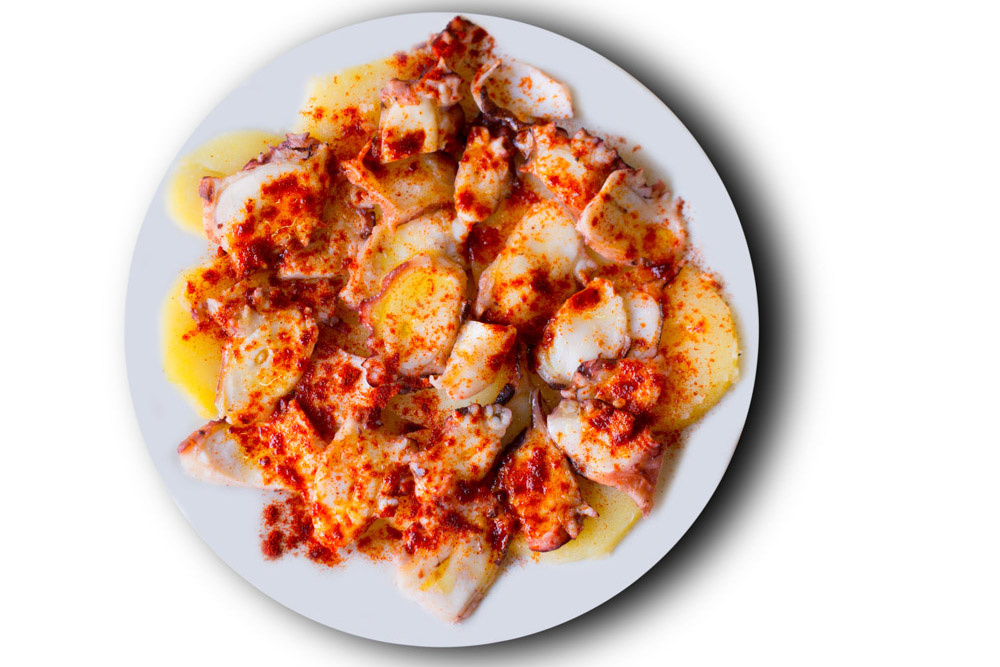
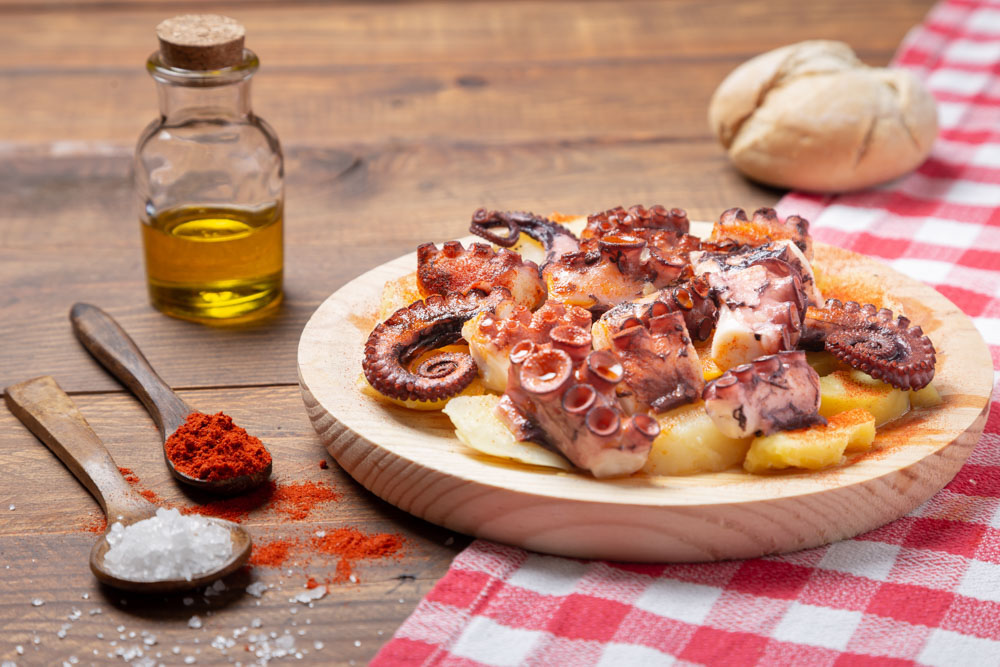
First, the octopus is tenderized, so it will have the best texture when it’s done cooking. It’s boiled until soft before the octopus is removed from the pan and replaced with potatoes which are also cooked until tender.
The traditional way to serve pulpo a la gallega is on a wooden chopping board (it absorbs the excess water without absorbing the oil). It should arrive with sliced potatoes on the bottom, topped with bite-sized pieces of octopus on top. The dish is finished off with a sprinkle of sea salt, a smidgen of paprika, and a generous drizzle of virgin olive oil.
12. Sobrasada
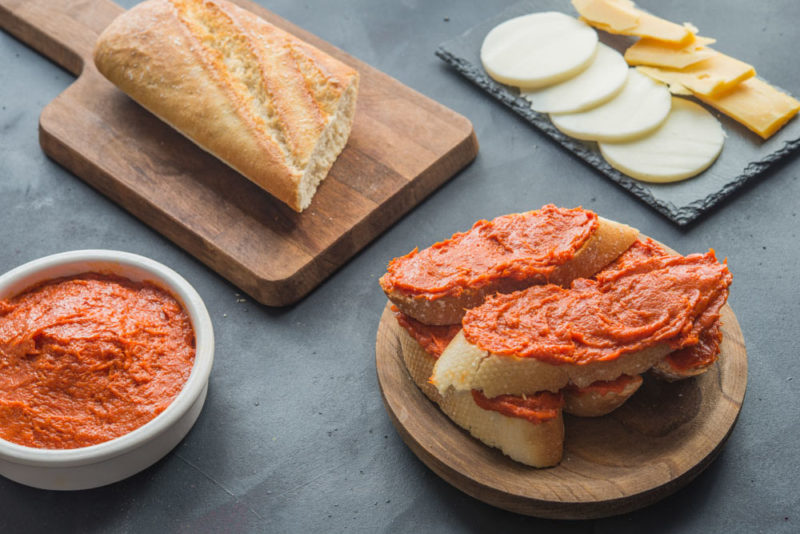
Sobrasada is one of the most popular dishes to come out of Mallorca in the Balearic Islands. In fact, so many people enjoy it that you can easily find sobrasada practically anywhere in Spain.
When it’s whole, sobresada looks a little bit like chorizo. But because of its soft texture, it’s usually served in a dish and spread onto bread like pate. Although it’s technically a raw pork sausage, the meat has been cured, so it’s perfectly safe (and delicious!) to eat.
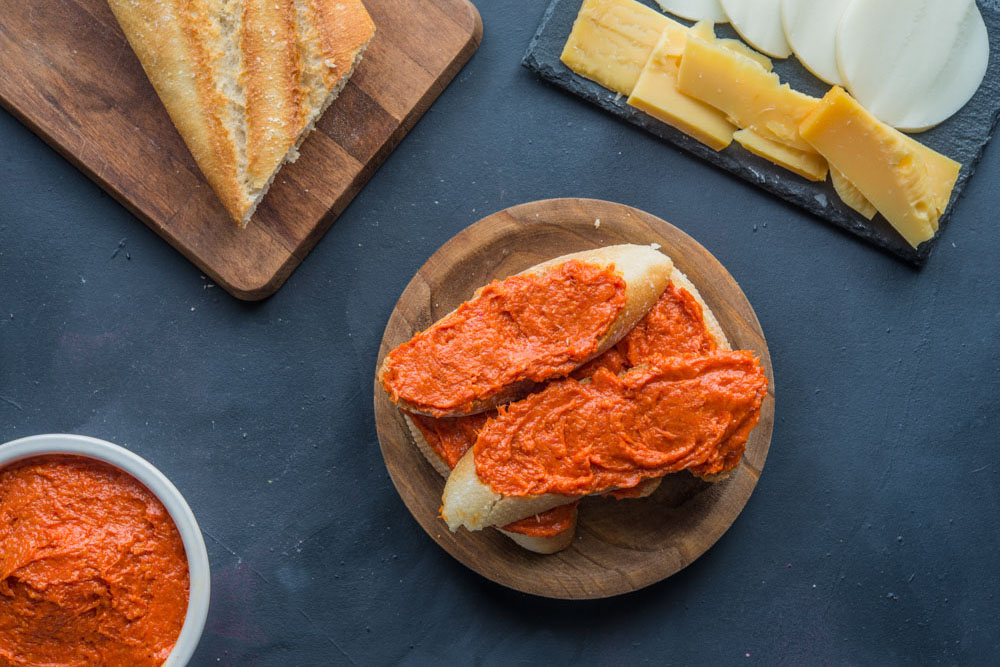
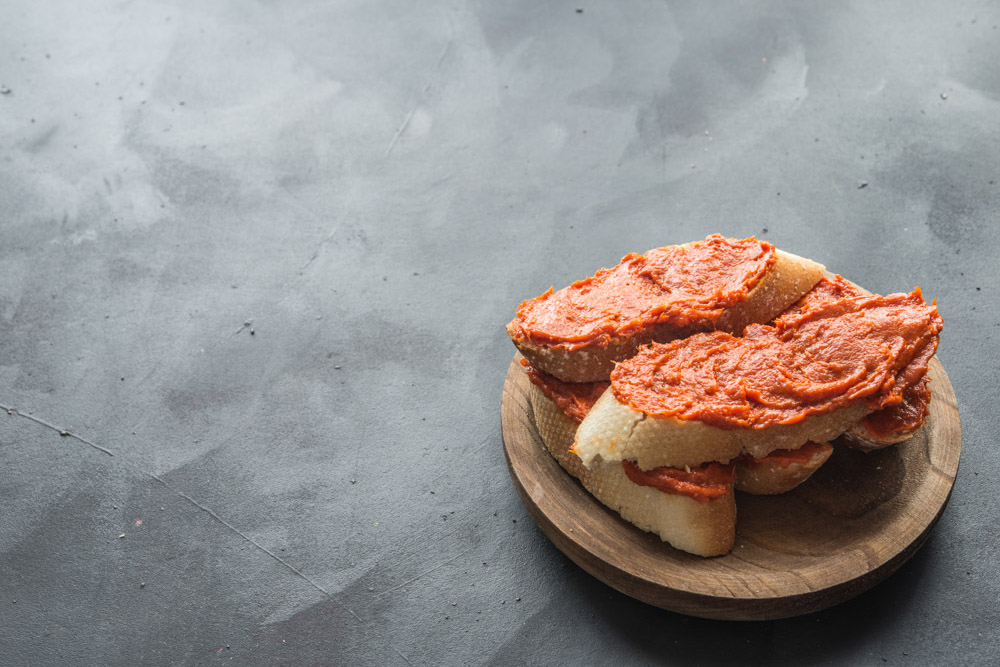
Sobrasada has a bright red color and a really powerful flavor. To make the sausage, raw pork is mixed with paprika and red peppers grown in the Balearic Islands. After all the ingredients are thoroughly mixed together and seasoned, everything is stuffed into a sausage casing and left to cure in the air for 1-2 months, depending on the size and shape of the sausage.
You’ll find sobrasada in some form for pretty much every meal. It will appear as part of a typical Spanish breakfast buffet alongside toast and crackers, as well as in lunchtime baguettes accompanied by cheese and honey. You’ll also often find it on evening restaurant menus as part of an appetizer platter, too.
13. Turrón
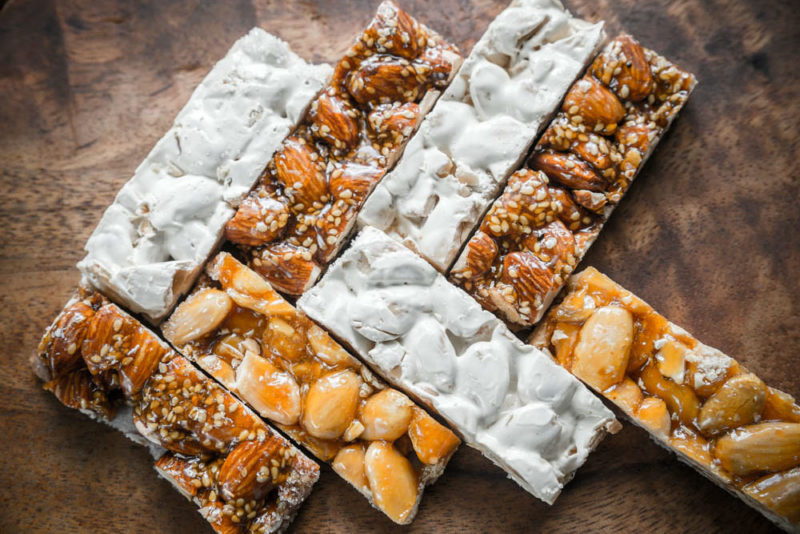
Food plays a huge part in Spanish festivals. During the holidays, one of the most popular treats to dig into and gift to others is turrón (nougat). A rich dessert that’s made from honey, sugar, almonds, and egg whites in its simplest form, turrón is so sweet that you only need a tiny bit to satisfy even the most demanding sweet tooth.
Although you won’t usually find it on cafe or restaurant menus, you’ll definitely see turrón in grocery stores, Christmas markets, and candy stores. It comes in a rectangular tablet or round cake shape and can be made in all different kinds of ways.
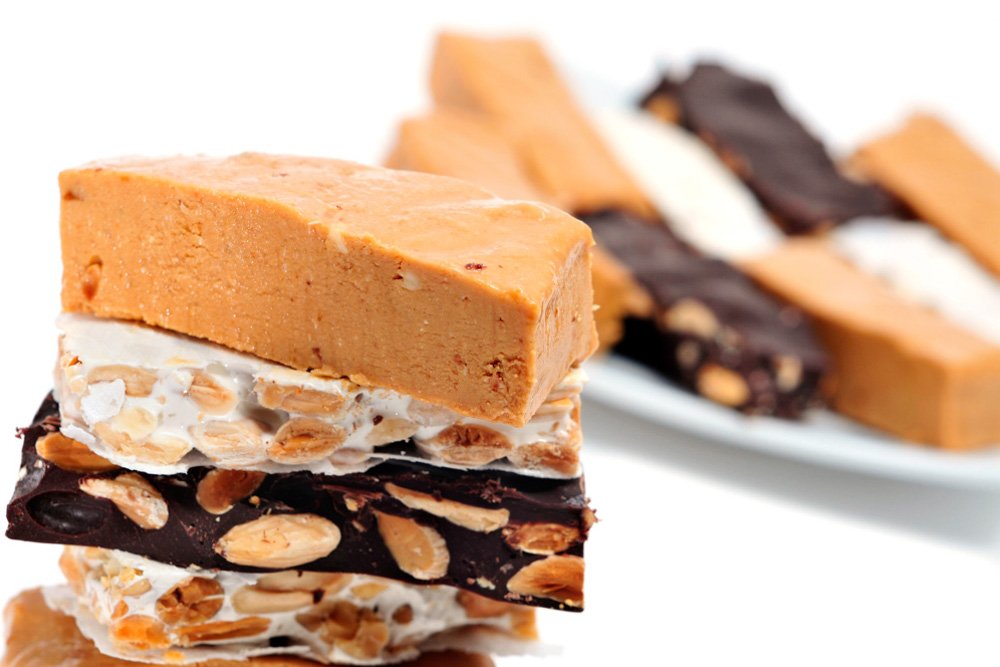
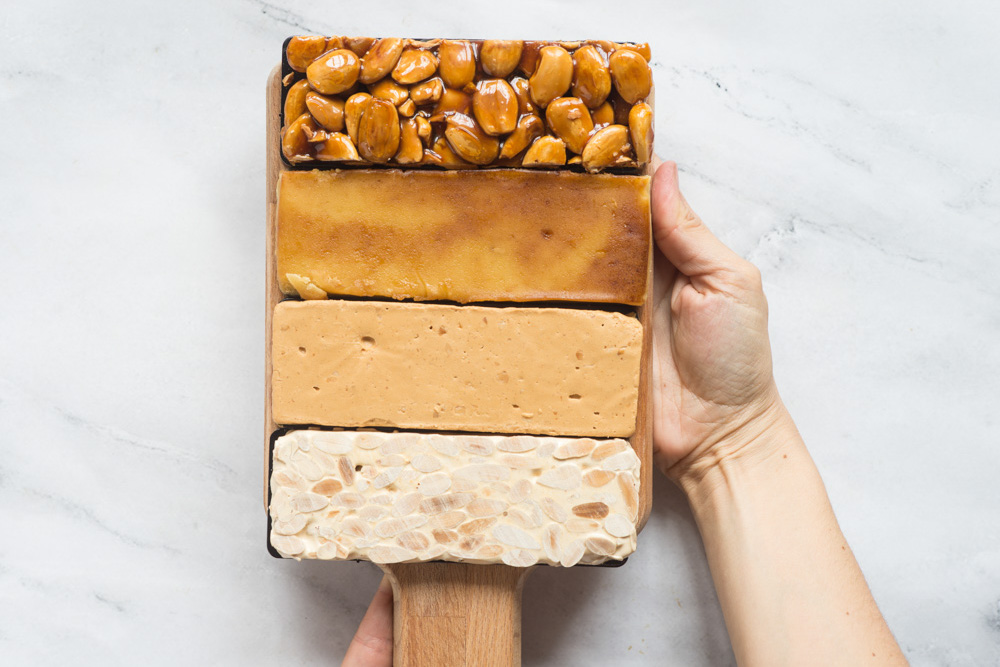
Turrón duro (hard turron) includes around 60% almonds and is so tough that it can be almost impossible to break off a piece. This kind is more like hard candy. Turrón blando (soft turron) is made with almond paste and oil instead of natural almonds. This gives it a much softer and crumblier texture.
Don’t worry if you’re not into almonds. There are all different kinds of turrón you can buy today. You’ll find everything from completely nut-free ones made from multiple layers of chocolate to ones laced with rich coffee and even specialist lemon curd varieties.
14. Tinto de verano
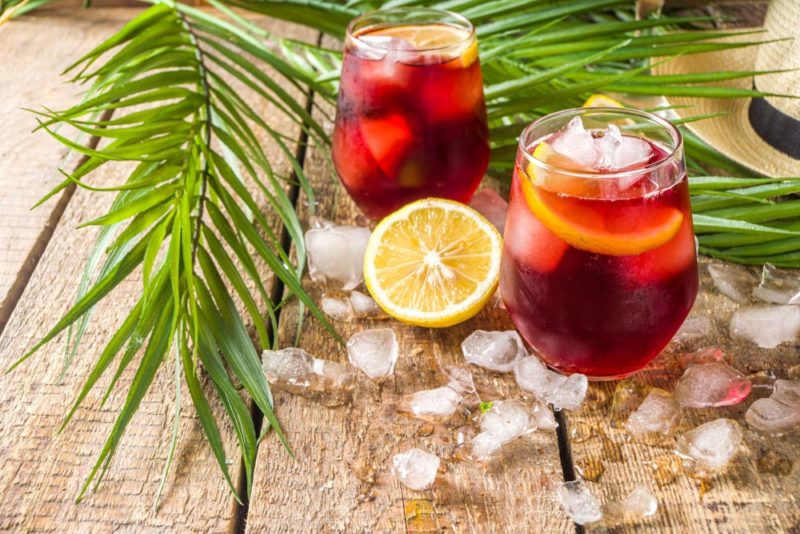
Sangria may be the first drink that comes to mind when you think of Spain. And while sangria certainly does exist, it’s more of a tourist thing than a genuine Spanish drink. When the sun is out, and they need something cool and refreshing, locals order a glass of tinto de verano (summer red wine).
Tinto de verano is served chilled with ice and is the perfect way to beat Spain’s intense summer heat. It’s made by mixing a young, fruity red wine with equal parts lemon-flavored soda. Sometimes it’s loaded up with orange and lemon slices for extra zest.
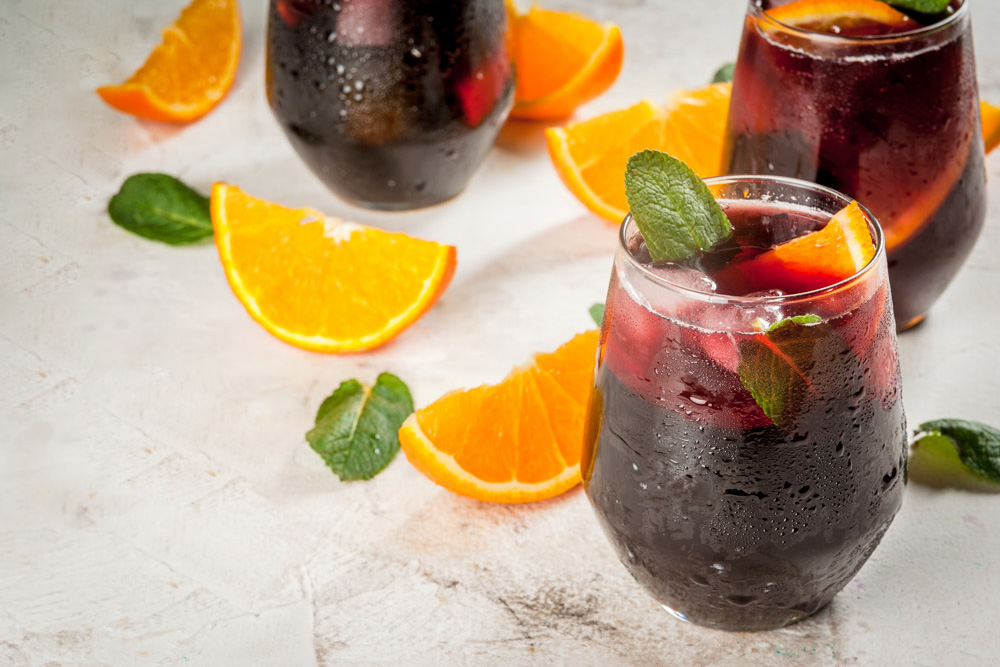
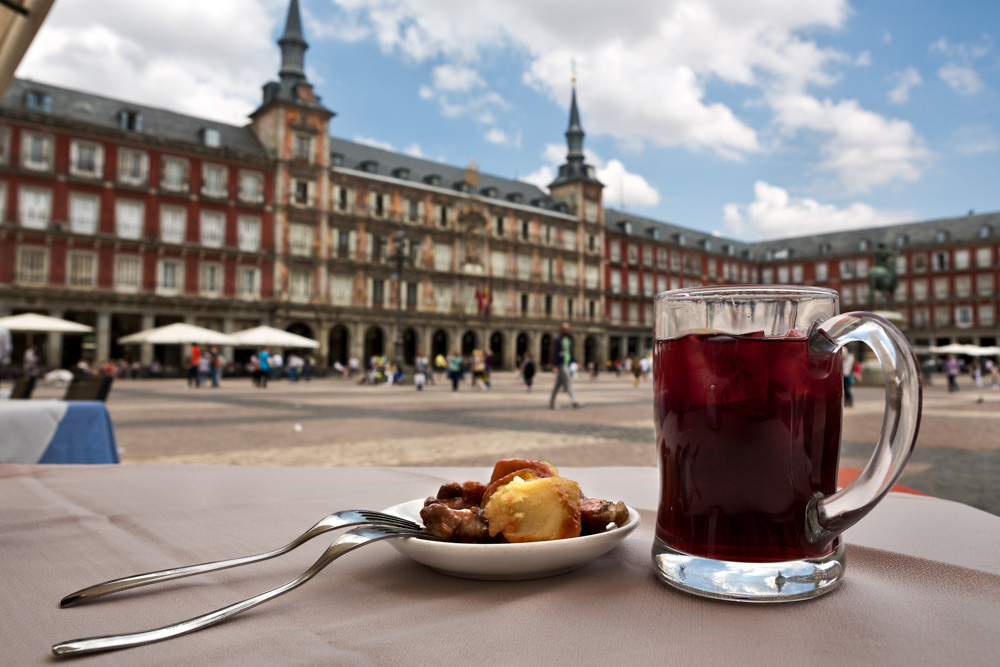
Because it includes fewer ingredients and isn’t something tourists usually know about, tinto de verano is much cheaper to buy than sangria. It’s also often available to buy by the glass, instead of sangria which tends to come as a pitcher.
Tinto de verano is super popular, and you’ll find it in almost every bar throughout summer. If you’re planning a day at the beach or a park picnic, you can also grab a bottle of pre-made stuff from the grocery store. It’s super cheap and surprisingly delicious!
15. Churros con chocolate
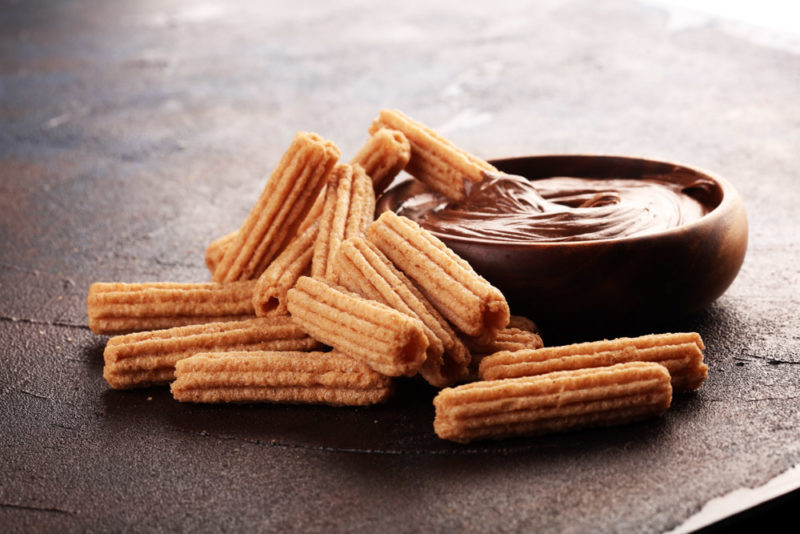
When you’re in the mood for something sweet and indulgent, you can’t go wrong with churros con chocolate (pastry sticks with chocolate dipping sauce). The iconic Spanish dish is made from pieces of dough that are fried until they’re crisp on the outside and delicately light on the inside. They pair perfectly with a cup of thick melted chocolate for dipping.
Churros con chocolate is so popular that you’ll find it available all over Spain. From food trucks and cafes to restaurants dedicated to this single dish and carnival stalls where you can’t get away from the tempting smell, churros are incredibly easy to come across in Spain.
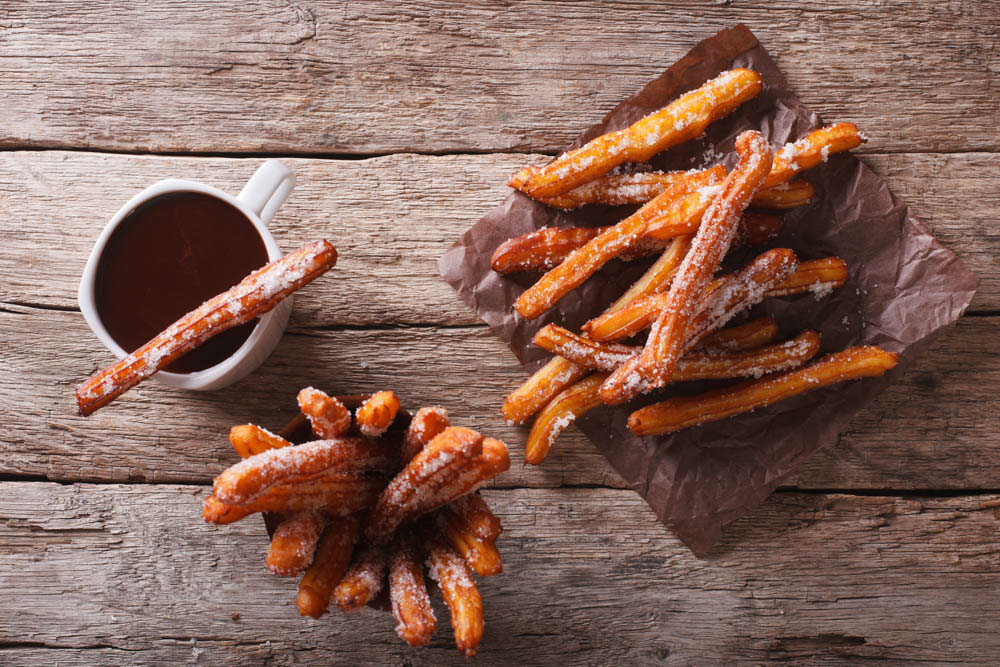

If you’re lucky enough to be visiting Spain during a festival or carnival, you’re in luck. During these events, churro stalls come to town selling all kinds of churros. Here you can indulge in churros dipped in dark, milk, or white chocolate, as well as other fantastic sauces such as dulce de leche (a type of thick caramel).
You’ll also find huge hollowed-out ones stuffed with things like dulce de leche, Nutella, and marshmallows. The sugar high will keep you going all night!
Did we miss any popular Spanish dishes? Add your favorite Spanish foods in the comments below so we can add them to the list!
Planning a trip to Spain? Check out our favorite books and travel guides!
SHARE THIS ON PINTEREST
